Did you know Red Bud Tree flowers are edible… or Carnations… or the flowers on your Bean Vines?
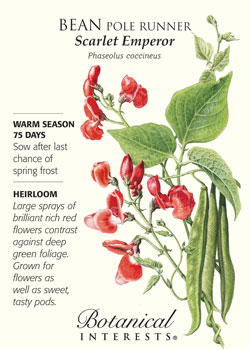
Dressing up green salads with edible flowers is popular in restaurants and home-cooked gourmet meals with ingredients right from the garden.
What’s prettier than home-grown salad greens brightened up with orange Nasturtiums or purple and gold Violas? These edible flowers not only brighten up the visual aspect of a green salad, they add a spicy flavor, as well. Nasturtiums are peppery, while the flavors of Violas and Pansies have been compared to Wintergreen.
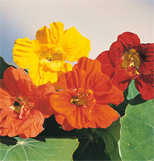
Photo from The Herb Cottage
Before using any flowers as edible additions to your plate, be sure you know how and where they were grown.
For instance, I would not use flowers bought in a floral department or a florist unless they were certified organic. Many ornamental flower growers use various chemicals to combat pests so the flowers look perfect. Flowers grown in other countries can be sprayed with chemicals that are banned here in the U.S. The best practice is to only use flowers you grow- without pesticides, of course, or from friends or a farmers’ market, after you’ve assured yourself they are free of chemicals.
There are myriad edible flowers beyond the common ones to add to salads, pancakes, drinks or canapes. I mentioned the Red Bud Tree. This tree is in the Fabaceae or family of legumes, like the acacia tree or Erythrina, the Coral Bean as well as some well-known vegetables such as beans, peanuts, peas and the like. The flowers from the trees in the Fabaceae family, IN MOST CASES, are edible, although the seeds are toxic.
But, I digress…. Redbud flowers are perfectly safe to eat and can be eaten raw or sauteed. Redbuds among the first to bloom in the spring, before they leaf out. They also produce large numbers of multi-seeded pods, from spring to late summer depending where it is.
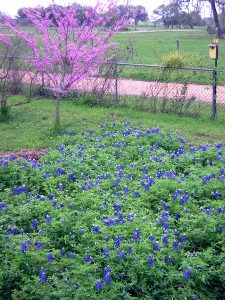
Redbud Tree at The Herb Cottage. You can see it’s blooming the same time as the Bluebonnets. This pic taken 3/24/10.
Native Americans ate redbud flowers and the young pods and seeds raw or cooked. The flowers can be pickled. They have a slightly sour taste and are high in Vitamin C . They’re a pleasant addition to salads and can also be used as a condiment. The unopened buds can be pickled or used as a caper substitute. Add them to pancake batter for a fritter or freeze them in ice cubes and serve them in drinks.The flowers on the bean and pea plants you’re growing for vegetables are edible, too. Just don’t eat too many, or you won’t have any vegetables!
Many flowers growing on your herb plants are edible as well, with flavor similar to the leaf.
- Chives
- Cilantro
- Basil
- Arugula
- Borage
- Calendula
- Chamomile
- Dill
- Fennel
- Rosemary
- and … don’t forget the Rose- It is, after all, considered an herb!
Above are just a few of the herbal flowers that are edible. The flavor ranges from milder than the leaf- as in Chives- or actually stronger and more tangy as in the Rosemary.
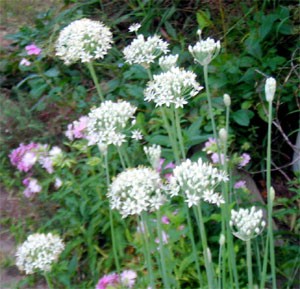
Garlic Chives in flower. These flower during the hottest time of the year!
Garlic Chive Flowers
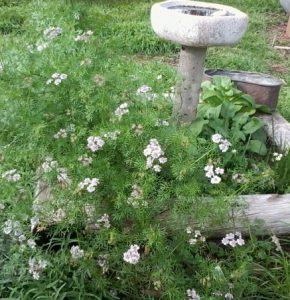
Cilantro in bloom
Other blooms you might not think of to eat include Carnations and Dianthus, Tulip Petals- with flavors ranging from fresh, baby peas to cucumber- NOTE: DO NOT EVER, EVER EAT TULIP BULBS!!!, Apple Blossoms, Pineapple Guava- sweet, tropical flavor, Yucca, Squash Blossoms- traditionally stuffed and fried, Hibiscus, including Okra flowers, Dandelions- of course, and Banana Blossoms.
And, of course, violets and pansies
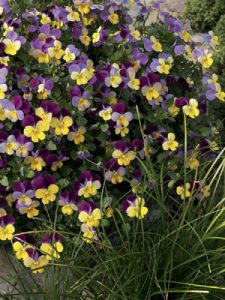
Why not try some of these more unusual edible flowers in your next salad, punch bowl, pancakes or as a sauté over rice, quinoa or pasta? You might be surprised at discovering new flavors and uses for those herbs and garden flowers.
Here is more extensive information about Edible Flowers.
REFERENCES:
- http://www.eattheweeds.com/eastern-red-bud-pea-pods-on-a-tree/
- http://www.thegardenhelper.com/edibles.html
QUOTE FOR THE MONTH
You’ve got to have something to eat and a little love in your life before you can hold still for any damn body’s sermon on how to behave.
-Billie Holiday, jazz singer and songwriter (1915-1959)
